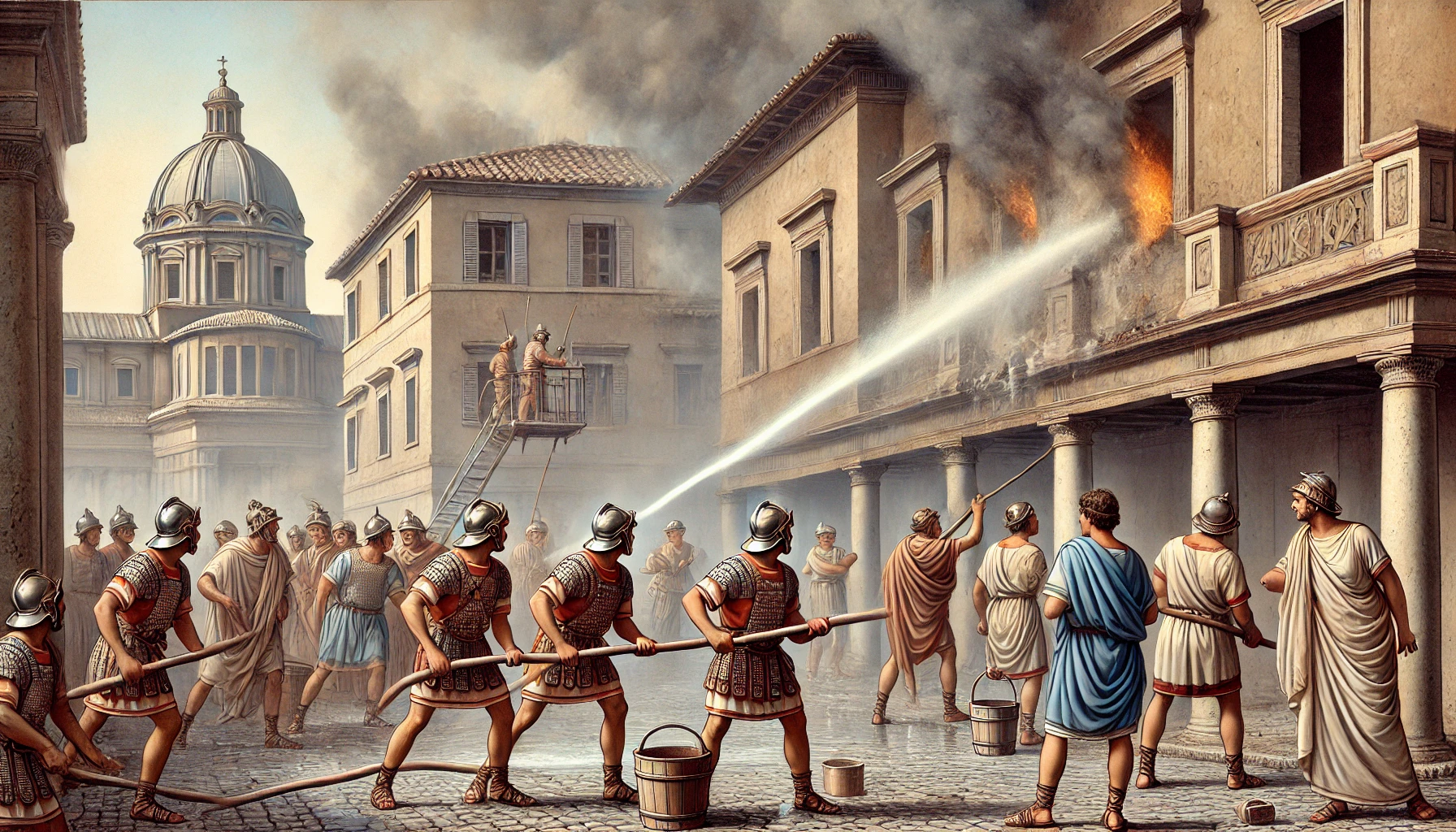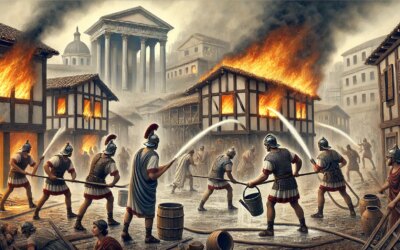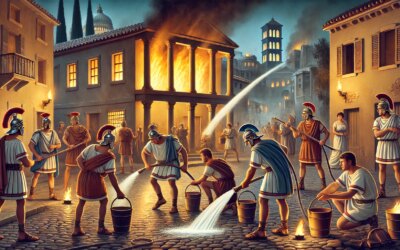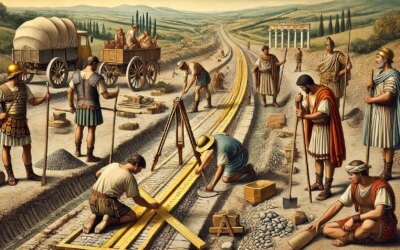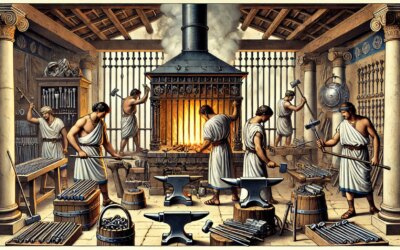Rome’s First Responders: Guardians Against the Flames
In the crowded, chaotic streets of imperial Rome, fire was a constant threat. With thousands of wooden buildings, cramped alleyways, and oil lamps flickering day and night, even a small blaze could spiral into a catastrophe. By the 1st century AD, the Roman Empire responded with a remarkable innovation: a professional fire brigade known as the Vigiles. These men were the unsung heroes of urban life, tirelessly patrolling, extinguishing fires, and rescuing citizens from disaster.
Founding the Vigiles: Augustus’ Urban Reform
Although earlier fire prevention efforts existed—such as privately hired slaves or temporary bucket brigades—it was Emperor Augustus who, around 6 AD, formally established the Vigiles Urbani. Modeled after a mix of firefighters and watchmen, the Vigiles were organized to both combat fire and maintain nocturnal security.
The new force was a response to Rome’s worsening fire problem. Devastating blazes, like those that destroyed large swathes of the Subura or threatened the Forum, demanded a more systematic approach. Augustus recruited 7,000 freedmen, divided into cohorts stationed across the city’s 14 regions, creating one of the world’s first state-run emergency services.
The Organization and Duties of the Vigiles
The Vigiles were structured in seven cohorts, each with approximately 1,000 men, led by a tribunus cohortis. The entire force reported to the Praefectus Vigilum, a high-ranking official appointed by the emperor. Each cohort was responsible for patrolling two regions of Rome.
Their duties included:
- Firefighting using buckets, siphons, and water pumps (siphones), sometimes flooding buildings to halt the flames.
- Night patrols to catch arsonists or spot early signs of fire.
- Rescue operations during building collapses or smoke emergencies.
- Maintaining order in the streets after dark, especially during festivals or periods of unrest.
The Vigiles also inspected buildings for fire safety, enforced regulations on oven usage and lamp placement, and ensured that streets remained clear of flammable obstructions.
Tools of the Trade
Roman firefighters used surprisingly sophisticated tools for their time:
- Bucket chains formed by passing water in leather buckets from fountains or cisterns.
- Siphons (primitive pumps) to direct water with more force onto flames.
- Axes and hooks to tear down burning structures or create firebreaks.
- Blankets and sand to smother smaller fires, particularly those caused by oil or textiles.
They also deployed mattresses and nets to catch people jumping from upper floors—a concept that finds echoes in modern fire rescue practices.
Living Quarters and Daily Life
The Vigiles were housed in stationes, strategically located watch stations equipped with storage for tools, water supplies, and sleeping quarters. Each cohort worked in shifts, with night patrols being the most critical. Vigiles also held regular drills and inspections, maintaining their readiness and discipline.
While they began as freedmen, many rose through the ranks, and citizenship was often granted after a fixed term of service, making the corps a pathway to Roman integration and upward mobility.
Heroism in Action: Fires That Shaped History
The Great Fire of Rome in 64 AD, during Nero’s reign, remains the most infamous blaze of the era. Despite the scale of destruction—destroying 10 of Rome’s 14 districts—the Vigiles worked ceaselessly to contain it. Some sources suggest they were overwhelmed or even obstructed by imperial orders, yet their role remains crucial in Rome’s emergency response.
Other lesser-known but frequent fires throughout the 1st century AD highlight how urban fire risk was a daily reality. Insulae—Rome’s apartment blocks—were especially vulnerable due to their wooden structures and dense occupation.
The Legal and Social Impact
Roman law gradually reflected the increased responsibility of the Vigiles. Arson became a capital offense, and building regulations were enforced more rigorously. Landlords were required to install firefighting equipment and allow access to water sources. The Vigiles, in turn, became agents of the state, respected for their public service.
Reliefs and inscriptions honor the bravery of these men, and their depiction in mosaics and wall paintings testifies to their visibility in Roman urban culture.
Legacy and Influence
The Vigiles inspired future municipal services throughout the empire and beyond. Their model influenced Byzantine security forces and even early medieval city guards. The concept of a public, state-funded fire brigade would not reappear in Europe until many centuries later.
Today, archaeologists continue to uncover station houses, tools, and dedication plaques from Vigiles units, providing insight into their structure and evolution.
Flames and Order in the Eternal City
In a city that prided itself on law and infrastructure, the Vigiles were a testament to Rome’s capacity for practical innovation and civic responsibility. They stood between chaos and order, between fire and stone, preserving the very heartbeat of the empire. Their story is not only one of hoses and helmets, but of courage, discipline, and enduring legacy in the shadow of the world’s greatest city.

